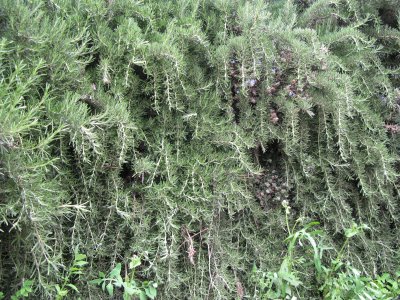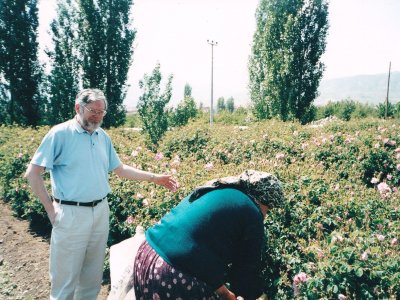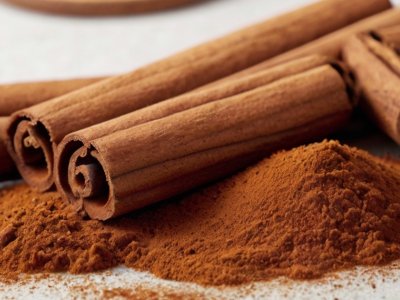Frankincense essential oil and claims for its cancer curing activity made by distributors of Young Living and doTERRA
Frankincense essential oil and claims for its
cancer curing activity made by
distributors of Young Living and doTERRA
Update Sept. 2014: Since writing this article there has at last been some action at
long last from the FDA over the illegal medicinal claims made on the distributors sites
of Young Living and dTERRA.
http://www.fda.gov/ICECI/EnforcementActions/WarningLetters/2014/ucm416023.htm
http://www.fda.gov/ICECI/EnforcementActions/WarningLetters/2014/ucm415809.htm
This article has been hard for me to write. This is because I know that many
years of research have shown some herbs do have anti cancer activity. Some
essential oils might also have such activity if they are used as medicines.
Therefore for me to be critical of research on plant extracts does not come
easy. Despite this, I have been horrified to see the outrageous and illegal
claims made on the web blogs of Young Living and Do Terra distributors. They
are promoting Frankincense oil as a treatment for cancers (2). These claims
are made on the basis of research of dubious merit and uncontrolled,
unevaluated administration in humans.
I have no problem with fundamental research into plant extracts giving scope
for further investigation. What I have a problem with is when that research is
grossly distorted in order to sell products. It is especially important to know
that the research below is sponsored by Young Living, a company notorious for
giving their distributors false information during their seminars. Those
distributors then repeat and disseminate dangerous and baseless claims.
Specific research papers cited below:
1) Extraction of biologically active compounds by hydro distillation of species gum
resins for anti-cancer therapy. https://www.oapublishinglondon.com/article/385
2) Boswellia sacra oil suppresses breast cancer cells
http://www.biomedcentral.com/1472-6882/11/129
Update Sept. 2014: The scientific studies reported above, were clearly not
evaluated by experts or they would have noticed several flaws. The Peer
reviewers in scientific journals are often asked to check research papers on
subjects that they know nothing about. Hence the reason there is so much
fake research floating around even in so called “reputable” publications. It is
like getting blood out of a stone trying to get them to publish retractions.
Problems with the published research
The research papers above have the names of Gary Young and CL Woolley on
them. Gary Young is qualified in nothing but being a quack, yet he has
managed to get his name into scientific research papers. This is a concern
because it will enhance his apparent credibility with other science publications.
CL Woolley has a degree in chemistry but has no experience within the main
essential oil industries or in their analytical expertise. He works for Young
Living and seems to have a background in nutrition, not essential oils. Anyone
can learn to use a GLC machine, but to be able to interpret the results takes
years of experience within the trade.
Methods:
All of the research contained in the above papers is conducted on lab cultured
cells. While this is normal procedure, any promising results cannot be assumed
to be the same if treating humans with the same substances. Such
experiments in drugs trials cannot progress until animal trials are undertaken,
toxicological, embryological and other adverse effects are studied. This has to
take place long before use in humans is permitted. With true traditional
medicine we do not have that level of trials but rather depend on generations
of acquired knowledge. The use of this Frankincense oil is certainly not
traditional medicine.
Unlicensed human trials:
The authors of both the trials above state: “safety and toxicity studies of the oil
and pre-clinical validation of the in vitro results will be required.” Ignoring this,
several Young Living and dTERRA distributors 5 have indicated on blogs that
humans may take the essential oil internally for cancer. There is no indication
that human trials have been approved by any medical or University ethical
committee. Instead, Young Living seems to be conducting the trials privately
under the heading of “traditional use”. It is disturbing that the company's
founder Gary Young, who was charged with practising medicine illegally, is
involved with this research. He was also involved with a clinic in Ecuador where
on the blog of a participant, she stated that: “essential oils were administered
to her as intravenous drips” 3. A therapy that has absolutely no basis in
historical or modern medicine. Such activity is among the worst type of
dangerous quack medicine one can come across.
Toluene:
In the analytical data of 2 above, I noticed Toluene was contained in this oil at
0.1 percent which equals 1000 parts per million. This is a concern due to the
known neurotoxicity of that chemical.6 There are numerous research papers that
have been published on this chemical due to its past widespread use in industrial
processes.
It is not uncommon for 100-250 ppm of toluene to be seen in essential oils, but 1000
ppm is extreme. The researchers claim that the toluene is a naturally occurring
constituent of some essential oils, for example, it has been found following dry
distillation of tolu balsam. However, if it was the result of degradation changes during
processing, or as a result of contamination of the source material, is unknown. I was
extremely sceptical about it being a natural source and so contacted two essential oil
analysts and a leading world expert in essential oils analysis. In all cases they
confirmed that they had seen trace amounts of toluene in some essential oil samples.
What they did not know was if it was a natural occurrence, or a contaminant from
cleaning procedures, paint coatings, water used, even in tobacco smoke.
Toulen in water by tribes in the area, the potential
for contamination from several of these sources is feasible, even possibly smoking as
sacks are being filled. The water used in distillation is also a potential source as it
has been found contaminating groundwater. It has even been found in water from
wells 265 feet deep. A search using the term 'toluene' here will produce numerous
references: http://nlquery.epa.gov/epasearch/epasearch
The volume of oil being taken internally by customers of Young Living and dTERRA
distributors is not clear. Therefore their exposure to toluene is also vague. In the
case of pregnancy this oil should not be taken internally. Smokers will
dramatically increase the levels of toluene in their blood if they also consume this oil.
Toluene is a restricted chemical in most countries due to its toxicological effects at
low doses, foetal toxicity and abortive activity (1.) See also:
http://www.cdc.gov/niosh/docs/90-101/
A study of workers routinely exposed to toluene found "a clear genotoxic effect
associated with toluene exposure". (4)
American Conference of Governmental Industrial Hygienists (ACGIH) Threshold Limit
Value (TLV) (2007) is 20 ppm. Female reproductive system damage and
pregnancy loss are the main risk factors.
The Occupational Safety and Health standard exposure limit for toluene in workplace
air is 200 ppm averaged over eight hours. However, the American Conference of
Governmental Industrial Hygienists (ACGIH) recommended limit for toluene in
workplace air is 50 ppm. Ingestion would give a far higher rate of exposure.
Botanical names:
Another issue with this and other related research are the Botanical names
given to the oils tested. In this case it is named as Boswellia sacra, yet it is
well known by expert botanists that Frankincense trees are notoriously
variable. Therefore, to give a precise botanical name is unreliable due to
interspecies variability. One tree may be identified by a botanical expert but a
tree a hundred feet away can be substantially different, especially in chemical
profile.
The resin is gathered from these wild trees and is mixed for commercial resale.
It is a fundamental problem with all the published research on Frankincense
type oils that the researchers have little real idea on the precise
botanical identity of the resins they use.
Other research on Frankincense:
There have been many studies over the years on the therapeutic effects of
Frankincense. Several researchers have indicated that they believe Boswellic
acids are responsible. However, this group of chemicals is usually obtained by
extraction with solvents such as alcohol. There may of course be other anti
cancer substances in the different types of resins which have yet to be
identified. If so the research on boswellic acids cannot be directly applied to
the use of the essential oils as is being widely claimed.
Conclusions:
we see preliminary studies on a particular oil being seized and hyped in order
to sell products. Academic research on essential oils is rarely taken forward to
controlled clinical trials. That is necessary in order to establish if preliminary
research is sound, or if the substance is safe for use as recommended.
Chewing Frankincense resin has an Ancient history for treating a variety of
illnesses. When chewed it contains a different combination of chemicals to that
found in the distilled or extracted oils. It also contains chemicals not found in
the oils. In addition, it is known that saliva in the mouth can cause chemical
changes in substances. Therefore, the fact that an unrefined resin or herb has
acknowledged medicinal activity, does not mean that a refined extract such as
an essential oil will have the same activity.
Hot distillation is man-made chemistry. Heat changes the chemicals of
essential oils occurring in plant tissues. This means that any traditional
medicinal use of the herb should be subject to fresh evaluation when the
distilled essential oil is used instead of the herb. Heat can create both
beneficial as well as hazardous substances. In the case of the research above,
we see a possible example of this effect with toluene.
While I accept that using the toxicological data of a single chemical in an
essential oil can be misleading due to the synergistic activity of all the other
chemicals, in this case we just do not know if the toluene is a natural chemical
or a contaminant. If it is a contaminant, then using this oil for treating cancers
is unwise. The effects of the whole oil may be beneficial in the short term, but
the long term effects of the toluene are sinister.
I have always (with a handful of exceptions) advised against the
internal use of essential oils as medicines because I know what can be
in them. In the case of the research on Frankincense oil there now
remains a question about the claims of “therapeutic quality”
frequently made by both Young Living and dTERRA for their oils when
compared to other suppliers.
Acknowledgements:With my thanks to Mynou De Mey for her assistance withthe wording of a complex subject.
References:
1.American Conference of Governmental Industrial Hygienists (ACGIH) Threshold Limit Value (TLV) (2007) theshold 20 ppm.
2. www.sites.google.com/site/younglivingeu and other links now gone.
3. Site no longer there.
4.Manikantan, P., Balachanadar, V., Sasikala, K., Mohanadevi, S., Arun, M., Kumar, A.K., Khan Mustaq Ahamed, S.A., Krishnan, B.B., and Kumar, S.S. Cytogenetic methods for assessing human exposure to toluene in Coimbatore, South India. Asian Pac J Cancer Prev. 11(6):1687-93, 2010.
5.http://www.tryessentialoil.com SITE GONE
and https://sites.google.com/site/younglivingeu/home/therapeutic-grade-essential-oils-to-beat-cancer + others.
6. Spencer PS, Schaumburg HH (1985). Organic solvent neurotoxicity, facts and research needs. Scand J Work Environ Hlth, 11, 53-60.
Also:
Pelclova D, Cerna M, Pastorkova A, et al (2000). Study of the genotoxicity of toluene. Arch Environ Hlth, 55, 268-73. Also:
Popp W, Vahrenholz C, Yaman S, et al (1992). Investigations of the frequency of DNA strand breakage and crosslinking and of sister chromatid exchange frequency in the lymphocytes of female workers exposed to benzene and toluene. Carcinogenesis, 13, 57-61.
Back to top.
Source and copyright:
http://www.aromamedical.org


